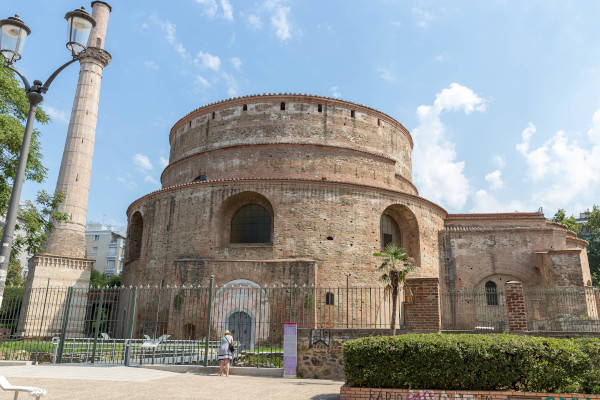Rotonda belongs to the cluster of buildings, like the Arch, the Palace, and the Octagon. It was built by the tetrarch Galerius in 306 AD in the same patterns as the Pantheon of Rome. Architecturally, it is a cyclical impressive structure with a diameter of 24,50 meters and a high that is approximately 30 meters.
What was the use of Rotonda?
According to researchers its initial use has intended to be either a temple of Zeus or Galerius mausoleum. After his death in 311 AD, Galerius was buried in Serbia and the Rotonda left unused and empty for several decades.
At the end of the 4th century AD, after some reconstruction works, it was transformed into a Christian church dedicated to the Archangels. It was a period when the rare murals and the mosaics that can be admired until today were added to the monument. In 1590 Thessaloniki was under the Ottoman rule and Rotonda acquired a minaret and was transformed into a mosque. While it served like that until the liberation of Thessaloniki in 1912.
After the liberation and when Thesalloniki became a part of the Hellenic State Rotonda was dedicated to Saint George and was used as a church until 1978.
What is Rotonda of Galerius today?
Then the big earthquake of the city occurred (1978) it was the timing when Rotonda was transformed into a museum. Today it is included in the list of UNESCO World Heritage Sites as an Early Christian and Byzantine monument of Thessaloniki.
